Offscreen, the incomparable festival that loves all things cult, is showcasing remarkable vampire films this year. They include the Belgian cult film par excellence: Daughters of Darkness. “The more ambiguous the better,” director Harry Kümel grins.
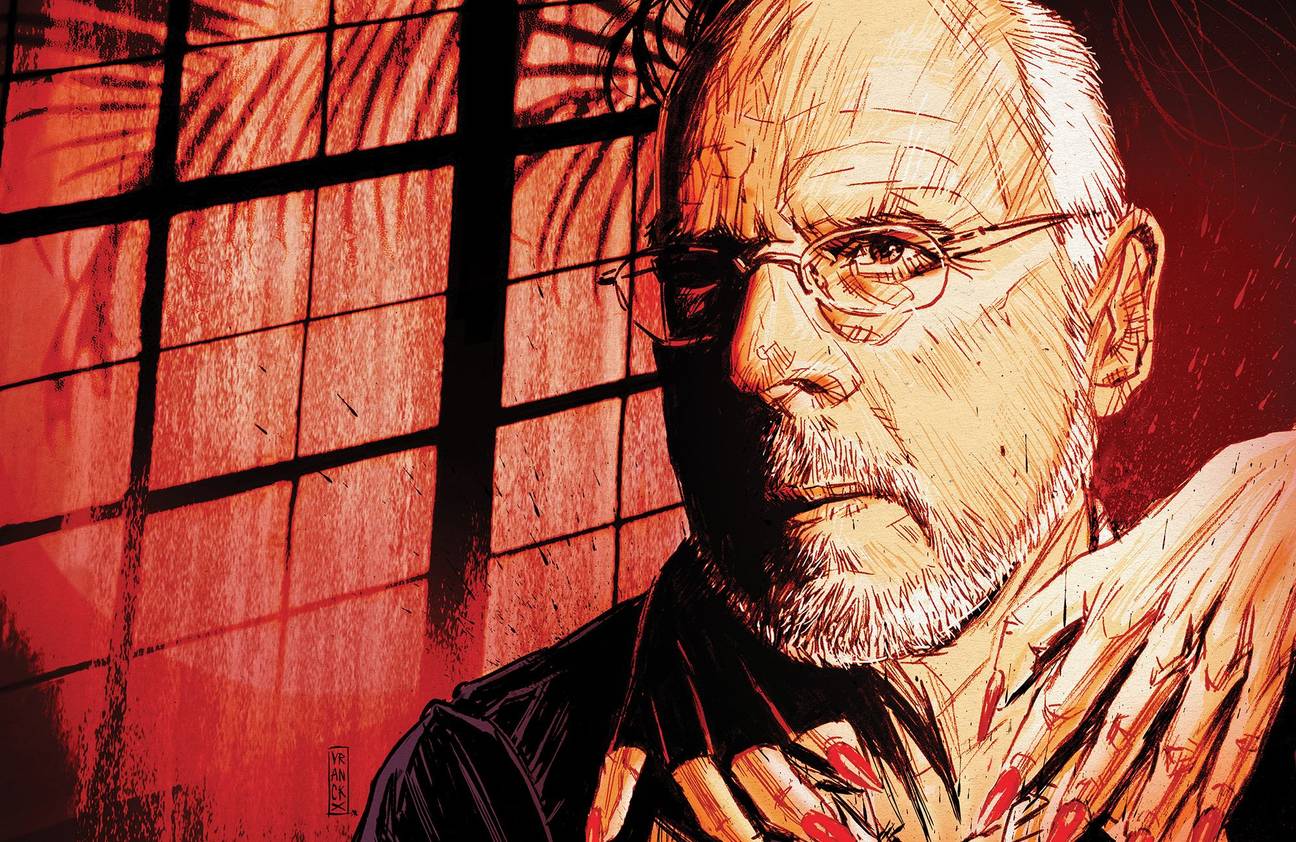
© Gilles Vranckx
| Harry Kümel, director of the Belgian vampire cult film Daughters of Darkness
Harry Kümel: Belgian master of Vampire Cult
Do we really need vampires anymore? No other monster has been used in films as often, and the vampire has consequently become a cliché. The Offscreen Film Festival is rushing to the aid of the aristocratic bloodsucker and presenting the suggestively-titled programme Vampires Suck! It features twenty-one films with a unique twist on the mythology of the vampire and which injected genre cinema with blood-curdling scenes and stories. (Find our Top 5-vampire movies of the Festival here and our Top Picks for the entire festival here)
The cult vampire film hall of fame happens to include a Belgian film too: Daughters of Darkness by Harry Kümel, a stylist who is as averse to naturalism as vampires are to garlic, sunlight, and crucifixes.
The now 78-year-old Kümel – he looks sixteen years younger, what ought we to think of that? – directed the film in 1971, but he talks about it as though it was yesterday. That is because people still contact him to talk about it often. “I get invited abroad at least once a month to present Daughters of Darkness. It is the only film in Belgian film history that is screened constantly. The age of the DVD is pretty much gone, but Daughters of Darkness still sells. My distributor in France has to delete the film from YouTube almost every week.”
What makes Daughters of Darkness so special? It is the furthest thing from the average vampire film. It is hardly even a horror film. Whatever chills it gives you are of the erotic kind. In an abandoned grand hotel in Ostend, the aristocrat Báthory (a star part for film diva Delphine Seyrig) and her sensual younger companion (Andrea Rau) let their eye fall on a recently married American couple (John Karlen and Danielle Ouimet). The latter are blissfully unaware that they have become the prey of lesbian vampires with a thirst for blood. The plot is threadbare, but that’s not the point. With a tremendous sense of style, irony, and melancholy, and with excellent use of the soundtrack by François de Roubaix and dreamlike cinematography, Kümel indulges in erotic and flamboyant tableaux.
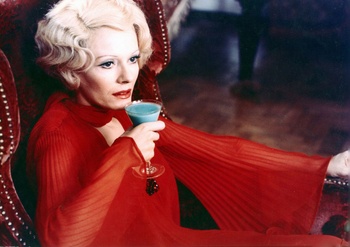
"My distributor in France has to delete the film from YouTube almost every week,” says director Harry Kümel
Dreadful intellectuals
Daughters of Darkness hops back and forth between refined exploitation and sordid arthouse. This dual nature is not a detail. “The problem with all my films – even the commercials – is that the producer always asks me at the end: ‘Do you really mean that?’ My answer is always the same: ‘That’s up to them to decide for themselves.’ I am acutely aware of what I am doing. Where the sincerity begins and ends is intentionally ambiguous. The content is not the only ambiguous thing about my films, you never know whether the cinematography is serious either.”
Taking Daughters of Darkness too seriously is not a good idea. “It is thanks to this film that I still travel the world. The MoMA in New York has invited me three times. I even go to the receptions with all the dreadful New York intellectuals. I have reconciled myself to the fact that I often get invited for the wrong reasons. The MoMA once invited me as part of a series on powerful women. So there I was, sitting beside Chantal Akerman and people like that. Chantal was a good friend and a great artist, but I didn’t belong there. I often face total incomprehension.”
Daughters of Darkness is one of the favourite films of feminist cultural philosopher Camille Paglia, but Kümel prefers people not to read too much into the story of the lesbian vampires. “By some miracle or other, Daughters of Darkness has stuck around, but it was nothing more than a trifle. Or a parody even. People insist that an artwork should be about something, but that is nonsense. What is Porgy and Bess about? Nothing. The story was just an occasion for George Gershwin to write music. In an angry letter, the opera composer Verdi once instructed his librettists: ‘Make it short, make it modern, and make sure I can set it to music.’ That’s how I think about it too.”
Kümel has a penchant for film directors who leave their mark on their work irrespective of demands or circumstances. “My favourite vampire films? Dark Shadows by Tim Burton. Bram Stoker’s Dracula by Francis Ford Coppola. I don’t understand why Coppola himself doesn’t like that film. What else? Et mourir de plaisir by Roger Vadim and starring Annette Stroyberg, Mel Ferrer, and Elsa Martinelli as lesbian vampires. Claude Renoir’s cinematography is especially magnificent. More than anything, you need to trust the director’s ambition to make a film that stands the test of time. That is a normal human ambition: you give birth to a child, you create an artwork and you hope that it lives and thrives. But the only way to fulfil that ambition is to approach reality in a different way, to say this is true and this is not true simultaneously. Wes Anderson who made Grand Budapest Hotel is one of the rare film directors who is still able to do that today.”
The nouvelle vague? Try watching some of those films again. One dud a er another!
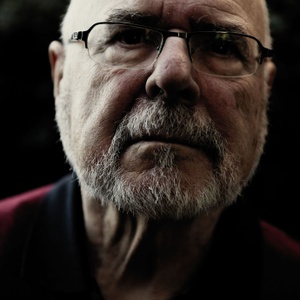
Blood and eroticism
Harry Kümel had started working for Flemish television while he was still a student and had to do military service. In 1968, he debuted as a film director with the historical drama Monsieur Hawarden. “The film didn’t do very well initially. It was 1968 and all the film journalists – who are often wrong – were crazy about the nouvelle vague. That movement gave the impression that anybody could make a film. But just try watching some of those films again. One dud after another! It was only when Monsieur Hawarden was hailed as one of the ten best films of the year in England that I started getting respect in Flanders.” The young film producers Pierre Drouot and Paul Collet did immediately like Monsieur Hawarden and they contacted Kümel. “Pierre and Paul had made a few scandalous films on an unsubsidized, shoestring budget: Cash? Cash! and L’étreinte. They suggested I make a low-budget commercial film. It had to be erotic and it had to have impact.”
But what should the story be? “At the time, we were living a semi-bohemian life on Kapitein Crespelstraat/rue Capitaine Crespel. While out walking, I happened to read a piece in Historia magazine about Elisabeth Báthory [the Hungarian countess (1560-1614) who purportedly killed hundreds of virgins to look younger – NR]. Because the film had to be modern, we imagined that Báthory was a vampire who was still alive but found it increasingly difficult to get her hands on virgins. Pierre liked the idea. Plenty of blood and plenty of eroticism,” Kümel laughs.
He wanted to cast the French film star Delphine Seyrig as the lead. She was best-known for L’année dernière à Marienbad by Alain Resnais. “Delphine Seyrig in a film about lesbian vampires? Some people thought the idea alone was crazy. But she was the girlfriend of Alain Resnais and he thought it was a good idea. ‘C’est comme une bande dessinée,’ he said about our film.”
Based on a sixty-page treatment (“written very quickly at my parents’ dining room table”), Henry Lange (“the biggest gangster in the film world but also the best salesman”) was able to convince five European and one American co-producer to commit to the project at the Cannes Film Festival. “We had to start filming almost immediately, even though there was no script. I thought it was very embarrassing, so I asked Jean Ferry for help. He was an excellent screenwriter who had worked with great directors like Clouzot, Buñuel, and Franju, but he had been side-tracked by the nouvelle vague. I thought he would absolutely shred the treatment we gave him because there was an erotic scene every five pages. But Ferry sent us a telegram to say that he thought the project was incredibly liberating.”
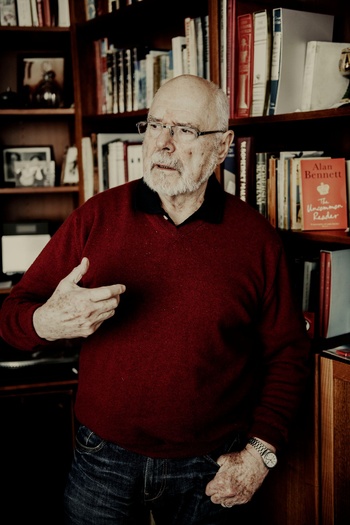
© Ivan Put
| Harry Kümel was born in Antwerp in 1940, made six short films between the ages of 13 and 18 and at 20, started directing TV dramas and documentaries
Bad actors, great film
Daughters of Darkness is set in a classy hotel at the coast. For the exterior, Kümel used the Thermae Palace in Ostend, but he filmed all the interior scenes in Brussels. “The Métropole Hotel refused to let us in. They later admitted how stupid they had been. Astoria, the most beautiful hotel in Brussels, did let us film there.”
When the American actor John Karlen stepped off the plane, Kümel got the shock of his life. “They had sent me photos from twenty years earlier. He was much too old and a terrible actor.” Danielle Ouimet didn’t turn out to be such a great talent either. “Ouimet was the sex bomb of French-speaking Canada. She and Karlen were supposed to play the young couple. It was the worst pairing in the world! But with the audacity of a young director, I was convinced that I could make it work somehow. When I apologized to Delphine Seyrig about Ouimet’s bad acting, she replied: ‘Don’t worry, they will only look at me.’ Kümel sees the funny side now. “Oh, actors… you mustn’t judge them on their intelligence. They have to be able to act and nothing more. Meryl Streep sometimes says silly things, but she’s a tremendous actress.”
By some miracle or other, Daughters of Darkness has stuck around. But it was never anything more than a trifle
After Daughters of Darkness, the world was momentarily Harry Kümel’s oyster. In Malpertuis (1973), he even directed the great Orson Welles and the French singer Sylvie Vartan. Four more feature-length films followed, but none were as successful as Daughters of Darkness. “I have nothing to complain about. I am very happy. The only thing I regret is that I did not make enough films.” Kümel never gave up. As soon as the producer has the financing, he will direct a new vampire film.
“Mothers of Darkness is not a remake or a sequel but a revamp: a similar film with an erotic touch, a bit of blood, and lots and lots of glamour.” “It is important not to be oblivious to the turn in the audio-visual world. Film will not end with the internet, but I don’t really believe in film as the main spectacle. People don’t watch films anymore, they binge-watch series. The success of Feud, the TV series about the rivalry between the Hollywood divas Bette Davis and Joan Crawford, strengthens my belief that there is still great nostalgia for film. That is why I think our revamp will work.”
While we wait, the Offscreen Film Festival is treating us to Daughters of Darkness. “I know the BIFFF [Brussels International Fantastic Film Festival - NR] well, and it is a great film festival, but Offscreen... Who will come to the screening at Cinema RITCS? Kids? Students?” No, lovers of cult and remarkable cinema. “Perfect.”
> Daughters of Darkness. 12/3, 19u30. Cinema RITCS in the presence of Harry Kümel
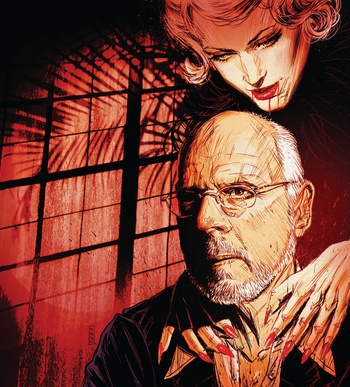
© Gilles Vranckx
| Daughters of Darkness and its director Harry Kümel
Who is Harry Kümel?
• born in Antwerp in 1940
• made six short lms between the ages of 13 and 18
• at 20, started directing TV dramas and documentaries
• debuted as a lm director with Monsieur Hawarden (1968)
• drew huge crowds in New York and Paris with Daughters of Darkness (1971), which became an infamous cult lm but did not do well at home
• managed to cast Orson Welles for the Cannes- selected magic-realist lm Malpertuis
• teaches lm studies and has directed successful advertisements, musicals, and operas
Read more about: Film

Fijn dat je wil reageren. Wie reageert, gaat akkoord met onze huisregels. Hoe reageren via Disqus? Een woordje uitleg.